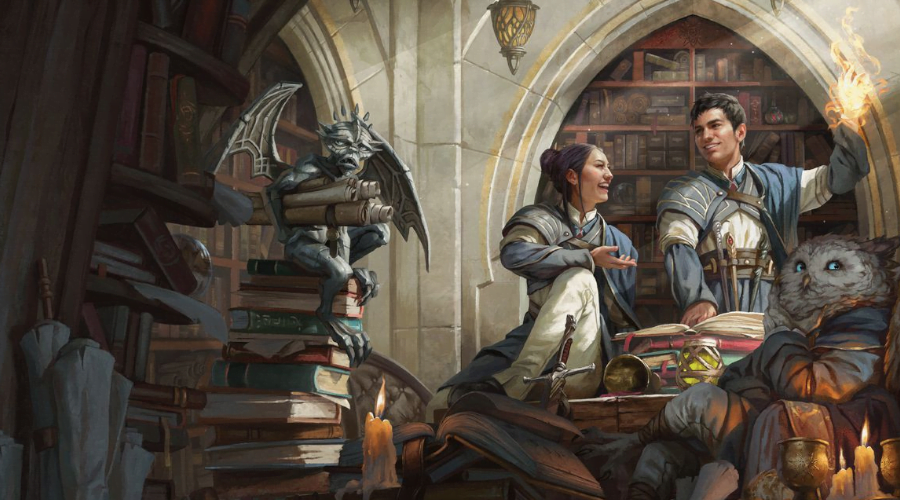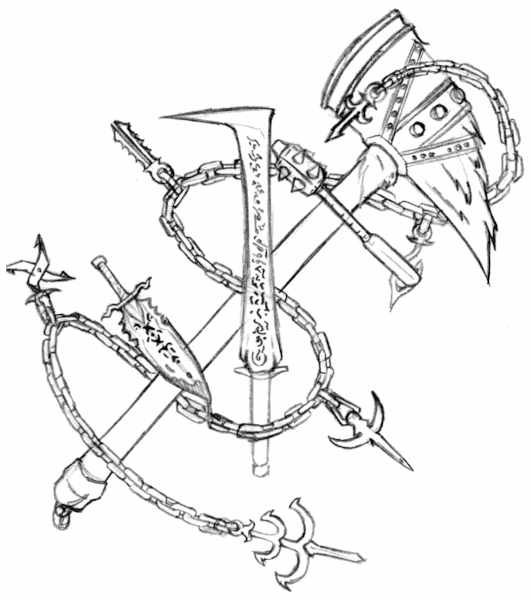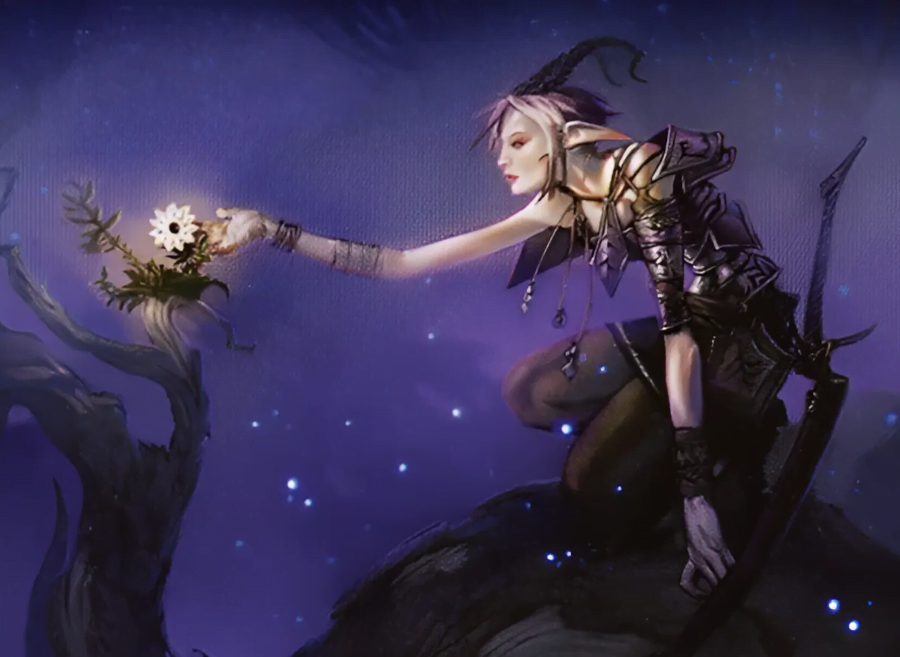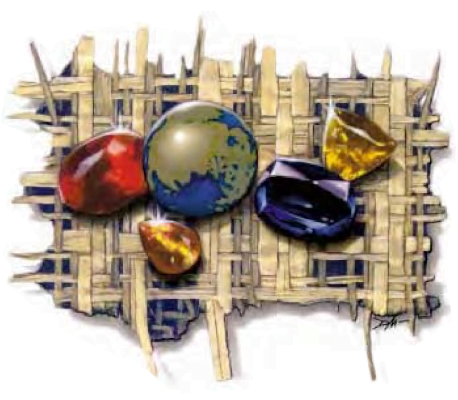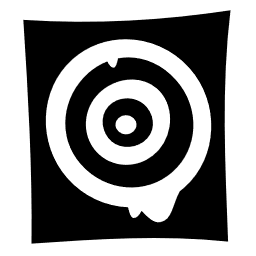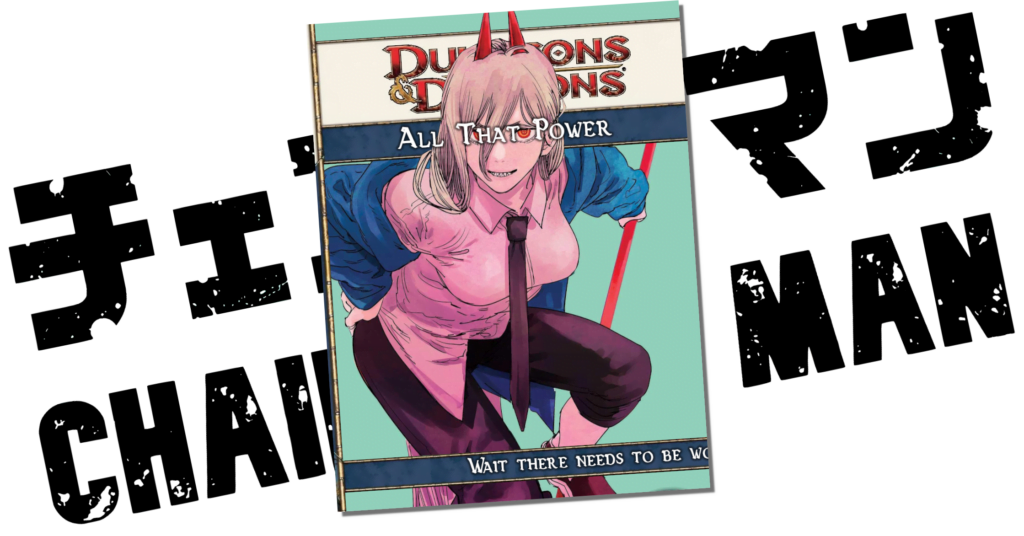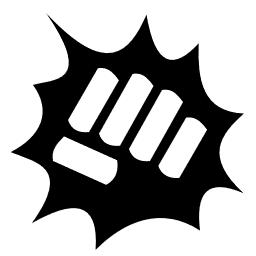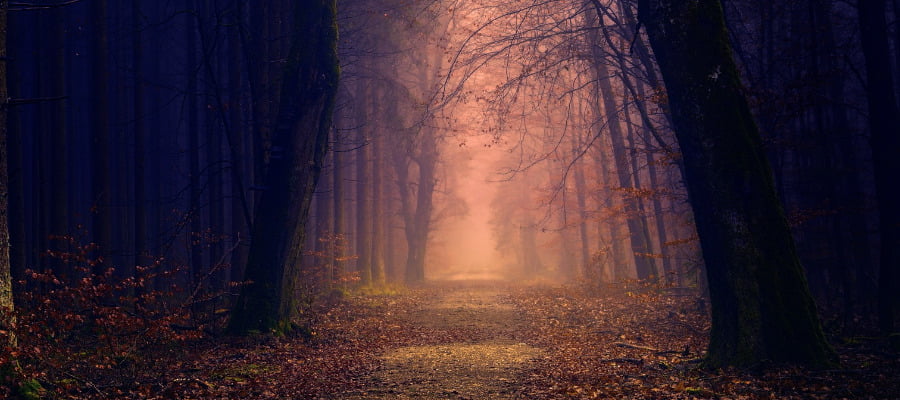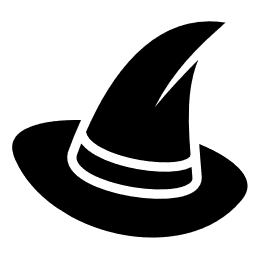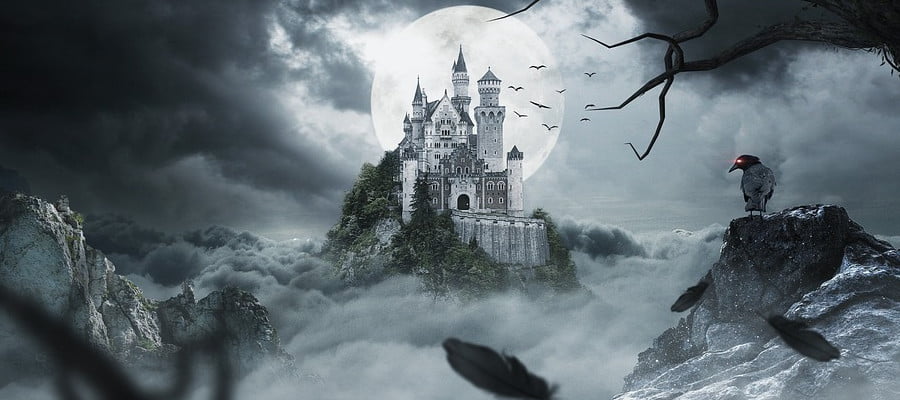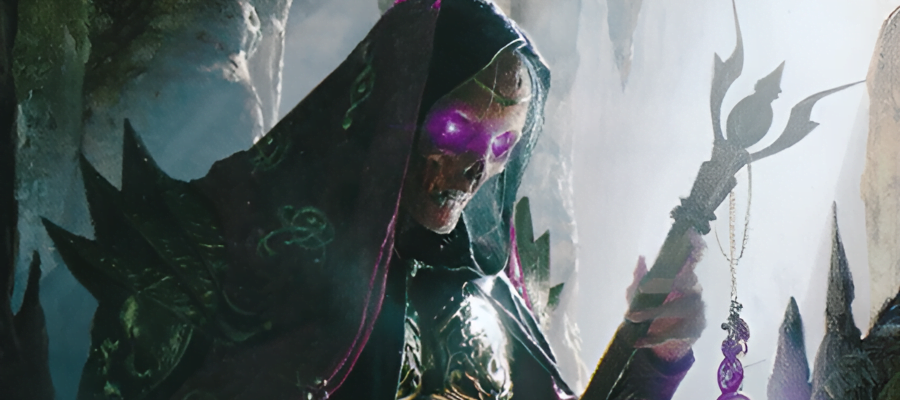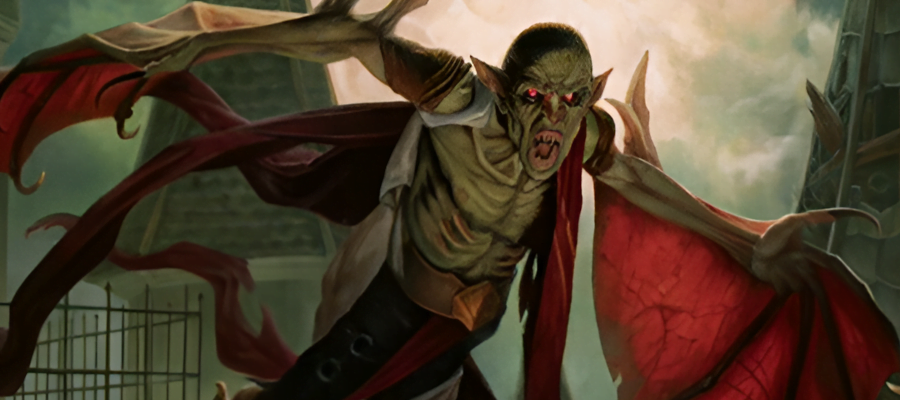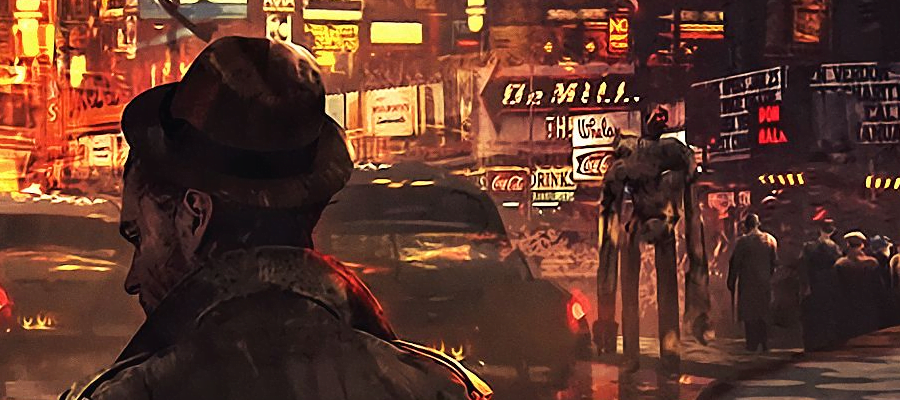The Laewaes Dramaturgists
Arcane magic represents the most important discipline available to us in which people across all the world can come together to share our notes and experiences in order to construct a vision of how this system functions that is coherent and precise and replicable and also probably in some way, fundamentally wrong.
Archmagus Laewaes I
Look I just want to tell you about a cool adventure site and backstory hook from Cobrin’Seil that’s about something I care about a lot recently, which is a university system in-setting. It just takes a bit of a walk to get there because it involves understanding Arcane magic and how it differs from Divine magic, Primal Magic, and Psionics in the setting.
Continue Reading →3e: Objection to Formula
When I started on this article, the plan was to talk to you about the magic item system in D&D 3rd edition, and let’s put a pin in the word ‘system’ there. But engaging with it meant looking at a place in history and a realisation of how I’m not just talking about stuff from an earlier edition of D&D I’m talking to you about an earlier version of myself.
As long as there has been an online, it seems, I have wanted to make things and put them on there.
Continue Reading →Why Is Druid?
Say that like ‘where is Wizard Hut?‘
I love the 4e Druid. This is a marked change from how much I liked the 3e druid, or how often you might see me playing a druid in a Baldur’s Gate game. Back in 3rd edition, the druid, despite being very powerful, never really engaged me, in part perhaps because I was always trying to find something exploitative and powerful rather than merely accepting the juggernaut of a toolkit the game just left in the Player’s Handbook. You couldn’t get clever with the Druid, you just had to pick it up and use it, like some sort of society of creative anachronisms where one of the anachronisms available to the players was has gun. Valid, but hardly sporting.
The Druid in 4th edition is different. Wildly different. Weirdly different, and different in one of those ways that shows what I think of as a seam in the design between 4th and 3rd editions of D&D.
Continue Reading →3e: Sticks and Stones
Alright I’m up late and the thing I was working on didn’t work and I don’t want to fall behind on my schedule so let’s just belt out something about the ongoing grievance I have in how 3rd edition D&D treated spellcasters as a better class of people with their own higher standard of living because being able to rewrite reality at will is by no means a perk enough to justify not feeling bummed out.
Let me talk to you about sticks and stones powers.
Continue Reading →Hecsenfore, Part 2
This article builds on the previous two articles about the formation and lived culture of the necrostate city Hecsenfore, in the setting of Cobrin’Seil. If you have questions, it’s probably answered there, to start with, and this article just jumps straight into describing more of the districts of the city and what life is like in them.
Continue Reading →Hecsenfore, Part 1
The previous article involved a long form discussion of the history and potential formation of a necrostate that could, hypothetically, in the future, integrate with the Eresh Protectorate. With all that preamble out of the way, this article presents the first part of the long-form writeup of the city state that is known by its name:
Hecsenfore
Coastal heavily urbanised independent city-state, The Land of White Ravens, the Graveless State, The Internal Labyrinth, The Obsession, The Eresh Outcast
Continue Reading →Hecsenfore, A Necrostate in Principle
There’s this quote, from The Great Dictator:
To those who can hear me, I say – do not despair. The misery that is now upon us is but the passing of greed – the bitterness of men who fear the way of human progress. The hate of men will pass, and dictators die, and the power they took from the people will return to the people. And so long as men die, liberty will never perish…
So long as men die, liberty will never perish. This is an idea that works for a variety of places to represent bad rulership, to show undying and unrelenting leaders. In Cobrin’Seil, I use places with undead rulership enough to give them their own technical name, that of a necrostate. A necrostate refers to a polity in which the ruler or ruling class is represented by the dead. In the real world, there is an extant necrostate (North Korea), but that’s ceremonial, in much the same way that a theocracy doesn’t need a real god to exist for the power to be situated in the hands of religious leadership.
But where dictators do not die, where the ruling class do not naturally cede power as human structural limits, can you form a reasonable, tolerable, culturally diverse and stable necrostate? How does something with an immortal, predatory ruling class get created and managed in a way that still creates a place where the people who live there are not in danger of permanent loss of life or exploitation, and what can sustain this kind of place over time? Is it possible to create a necrostate that, at least in the context of social and political structures, is not worse than places with things like noble orders?
What does that look like, and how do we get there?
Continue Reading →How To Be: Eda Clawthorne (in 4e D&D)
In How To Be we’re going to look at a variety of characters from Not D&D and conceptualise how you might go about making a version of that character in the form of D&D that matters on this blog, D&D 4th Edition. Our guidelines are as follows:
- This is going to be a brief rundown of ways to make a character that ‘feels’ like the source character
- This isn’t meant to be comprehensive or authoritative but as a creative exercise
- While not every character can work immediately out of the box, the aim is to make sure they have a character ‘feel’ as soon as possible
- The character has to have the ‘feeling’ of the character by at least midway through Heroic
When building characters in 4th Edition it’s worth remembering that there are a lot of different ways to do the same basic thing. This isn’t going to be comprehensive, or even particularly fleshed out, and instead give you some places to start when you want to make something.
Another thing to remember is that 4e characters tend to be more about collected interactions of groups of things – it’s not that you get a build with specific rules about what you have to take, and when, and why, like you’re lockpicking your way through a design in the hopes of getting an overlap eventually. Character building is about packages, not programs, and we’ll talk about some packages and reference them going forwards.
We’ve talked about The Owl House before in this column, and last time it was about the incredibly cool Made Of Love Interest Amity Blight. But that’s not all that The Owl House offers for cool and interesting character inspiration you should totally use as an excuse to get onto the table in your friendly 4th Edition D&D game –
You do have one of those right?
Why are you reading these then?
Spoiler Warning: I’m going to mention things that happen in The Owl House that change the status quo. If you want to avoid that kinda thing, this is your warning!
Continue Reading →4e: Many Hands Make Fight Work
Yeah I’m stretching for an aphorism, don’t @ me.
There’s a term you may have heard in the context of tabletop games, usually in the context of combat-focused tactical games, but not always, and sometimes in the context of videogames or TCGs, which is the idea of Action Economy.
But what is, an action economy?
Continue Reading →How To Be: Cassandra and Rapunzel from Tangled (In 4e D&D)
In How To Be we’re going to look at a variety of characters from Not D&D and conceptualise how you might go about making a version of that character in the form of D&D that matters on this blog, D&D 4th Edition. Our guidelines are as follows:
- This is going to be a brief rundown of ways to make a character that ‘feels’ like the source character
- This isn’t meant to be comprehensive or authoritative but as a creative exercise
- While not every character can work immediately out of the box, the aim is to make sure they have a character ‘feel’ as soon as possible
- The character has to have the ‘feeling’ of the character by at least midway through Heroic
When building characters in 4th Edition it’s worth remembering that there are a lot of different ways to do the same basic thing. This isn’t going to be comprehensive, or even particularly fleshed out, and instead give you some places to start when you want to make something.
Another thing to remember is that 4e characters tend to be more about collected interactions of groups of things – it’s not that you get a build with specific rules about what you have to take, and when, and why, like you’re lockpicking your way through a design in the hopes of getting an overlap eventually. Character building is about packages, not programs, and we’ll talk about some packages and reference them going forwards.
You know the story of Rapunzel? The kid’s story about a girl with long hair in a tower which you can tell as a bedtime story and it takes maybe ten minutes, fifteen if you’re doing a lot with the voices and details and want to make the witch’s end really grisly? Well, yeah, turns out that got a movie back in the day and then that movie got a TV series and that TV series kicks ass, and so for this Smooch Month, I decided to try and make an article about base-level optimising choices for a pair of characters, a battle couple. In this case, one of those Battle Couple members is Rapunzel, the hero of the story Rapunzel, and the other is, uh
Her name’s Cass.
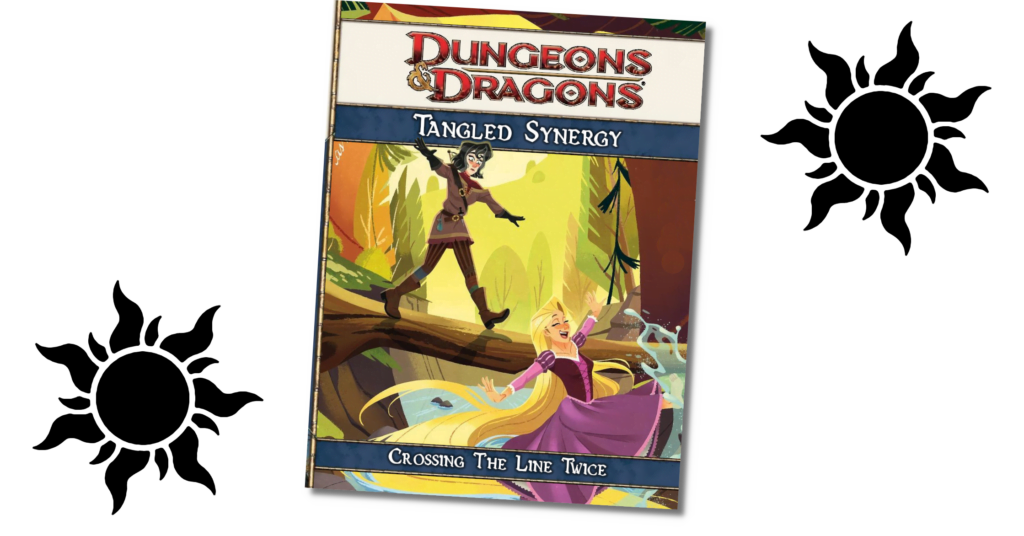
And hey, I’m going to talk about some spoilers for a kid’s cartoon you probably didn’t watch but I do like it and I think if you care about spoilers, well you should watch it without me being the way you find out about the third story arc of the TV series and what it means okay byeee.
Continue Reading →‘These Two Provinces Should Kiss’
Let me talk to you about Cobrin’Seil, a big country, a big war, and something gay.
Continue Reading →3e: The Love Potion
We’re all kind of on the page that ‘love potions’ in stories are probably bad, right?
Those things that you could buy in 3e as a cheap, disposable magical item?
Continue Reading →4e For Two
A common complaint amongst fans of Dungeons And Or Dragons is that organising a playgroup is hard. It’s a game with a lot of investment, a lot you can do outside the game to play with it, and people love to play with it in those ways – I mean what are these articles if not me playing with D&D when I’m not playing D&D? – but there’s a thing that people talk about from time to time when trying to circumvent the challenges of running D&D which is:
What if D&D but fewer players?
Continue Reading →4e: Backgrounds Are Weird
Hey, do you know how character Backgrounds work in 4e?
Because chances are you kinda don’t know, and I’m a great big 4e nerd and I’m not sure how they work either.
Continue Reading →How To Be: Power (in 4e D&D)
In How To Be we’re going to look at a variety of characters from Not D&D and conceptualise how you might go about making a version of that character in the form of D&D that matters on this blog, D&D 4th Edition. Our guidelines are as follows:
- This is going to be a brief rundown of ways to make a character that ‘feels’ like the source character
- This isn’t meant to be comprehensive or authoritative but as a creative exercise
- While not every character can work immediately out of the box, the aim is to make sure they have a character ‘feel’ as soon as possible
- The character has to have the ‘feeling’ of the character by at least midway through Heroic
When building characters in 4th Edition it’s worth remembering that there are a lot of different ways to do the same basic thing. This isn’t going to be comprehensive, or even particularly fleshed out, and instead give you some places to start when you want to make something.
Another thing to remember is that 4e characters tend to be more about collected interactions of groups of things – it’s not that you get a build with specific rules about what you have to take, and when, and why, like you’re lockpicking your way through a design in the hopes of getting an overlap eventually. Character building is about packages, not programs, and we’ll talk about some packages and reference them going forwards.
I suppose, in addition to any of the other standard comments you see from me in a How To Be post, I’m going to be mentioning some details from late in the story of Part 1 of Chainsaw Man. To that end, consider a spoiler warning in effect. You’re going to learn some stuff about how Power’s story goes, in general. No point by point, and I will keep the details broad, and if you’re interested in Chainsaw Man I do recommend you check it out. You know, if you don’t mind an action horror manga where discussing the character requires a mandatory Spoiler Warning I suppose.
Continue Reading →Iron Hearts And Minds
When I talk about Cobrin’Seil and the people who live there, I do it in the context of I guess a kind of worldbuilder who wants to present heritages as whole sapient people who exist in a world and relate to that world materially. ‘A Wizard did it’ does not satisfy me. I do not like entirely magically sustained cultures, and I do not like the idea of cultures that have a singular personalised focus. I treat the heritages as if they have cultural stereotypes, which are based on interactions and communities, but I try to approach them as if they are creatures that exist in a world and interact with that world.
This approach is great when I’m starting out and filling out the broad spaces. What are humans? What are the things related to the humans? But the thing is, in D&D, character heritages aren’t just a worldbuilding entity, they’re also player pieces, mechanical objects that players want to interact with. They can range from important for entirely mechanical reasons (hi there, Dragonborn and Dwarf), or because of cultural prominence.
In this category fall today’s three examples: The Minotaur, the Warf*rged and the Giths. And I want to give a bit of a talk about what they are in Cobrin’Seil, but also, why players see them, and what that means for the world.
Continue Reading →3e: Monk Attacks
Have you ever encountered something where a system is evident but the language for discussing it isn’t?
Cast your mind back to the days of Dungeons & Dragons 3rd edition. No, not 3.5, the one that forms the basis for Pathfinder that people generally claim is ‘the good one’ before 4th edition (the best edition) came along. 3rd edition, the edition before 3.5, which is what it definitely was, was notable for being ‘the things people like about 3.5 D&D, but all quite a bit more shit.’
Know what was really bad in 3rd edition? Well, a lot of things, including Paladins, Rangers, Fighters, Barbarians, Bards, Half-Orcs, Half-Elves, Halflings and all but two melee weapons, but, in particular for this conversation, one class that was quite bad was the monk.
Continue Reading →The How To Be Covers of 2023
Hey do you want a single article with nice, clear, readable version of all of 2023’s How To Be book covers? I like to imagine you do, so here’s a post with them in it!
Continue Reading →Corrindale: A Place For Places To Happen In
Hey, what’s in the Pacific Ocean?
Continue Reading →How To Be: Sothe Pathofradiance (In 4e D&D)
In How To Be we’re going to look at a variety of characters from Not D&D and conceptualise how you might go about making a version of that character in the form of D&D that matters on this blog, D&D 4th Edition. Our guidelines are as follows:
- This is going to be a brief rundown of ways to make a character that ‘feels’ like the source character
- This isn’t meant to be comprehensive or authoritative but as a creative exercise
- While not every character can work immediately out of the box, the aim is to make sure they have a character ‘feel’ as soon as possible
- The character has to have the ‘feeling’ of the character by at least midway through Heroic
When building characters in 4th Edition it’s worth remembering that there are a lot of different ways to do the same basic thing. This isn’t going to be comprehensive, or even particularly fleshed out, and instead give you some places to start when you want to make something.
Another thing to remember is that 4e characters tend to be more about collected interactions of groups of things – it’s not that you get a build with specific rules about what you have to take, and when, and why, like you’re lockpicking your way through a design in the hopes of getting an overlap eventually. Character building is about packages, not programs, and we’ll talk about some packages and reference them going forwards.
Who are we looking at this month? Well, since this series was started off by Hilda from Three Houses, it seems positively rude on my part to not reach once more to the Fire Emblem well, with its wonderfully varied names and … embarrassingly limited mechanical scope.
Let’s look at a character from a Gamecube game about fighting a dragon, or a god, or the black knight, or something.
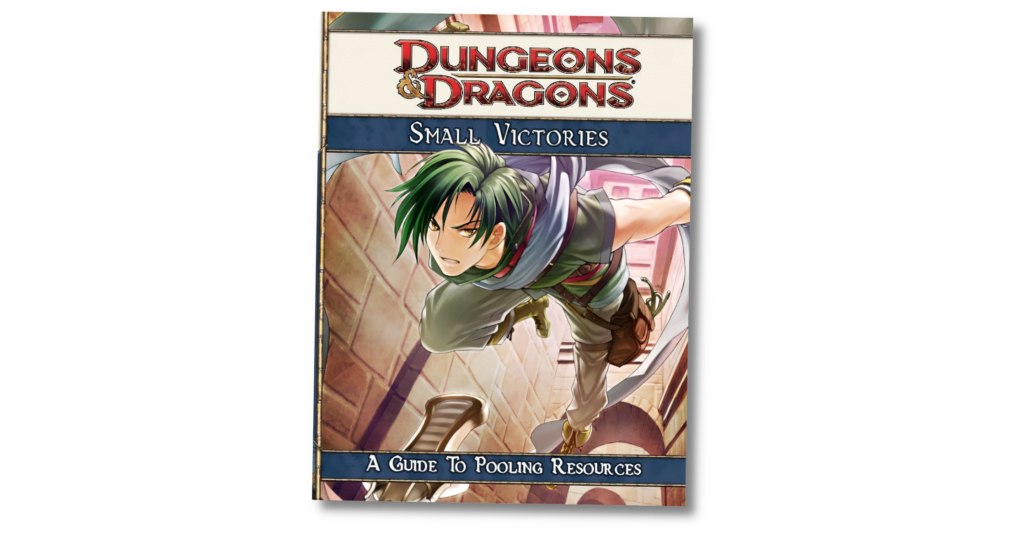
The Origin Of The Word ‘Orc’
The term for a cultural group, as a name, is its demonym. In Cobrin’Seil, demonyms are words from the culture in question. There are some political contentions there – the Eladrin consider themselves more legitimate Elves than Elves, but Elves are called Elves and Eladrin don’t call themselves Elves because they do not want to be considered the same thing as Elves. This is a long standing beef between the kind of people who own libraries older than most countries. But notably, these words are in the languages of the Elf and the Eladrin. Drow is a word from the same language group, a term that the Drow chose for themselves and use for themselves. The Kai of Shadar-Kai are named after their fortress home, which is, again, an Eladrin word, but they’re all from the same cultural group and choose the term.
The term ‘Beast’ in common comes from ‘Beastfolk,’ which is to say a generic term for a scary thing from the forest. But Beasts are named after Beastfolk, and Beastfolk, again, named themselves. The Beastfolk formed a coalition, made a common language, and then shared that language amongst themselves, developing the term bhehst which evolved over time to Beast, and when they needed a term to describe the coalition, Beastfolk was the result.
Common did not impose this name on them, it learned it from them.
Consider the word ‘Goblin’, a word from the Goblins, is notable because the way the word is used and structured, in language, it’s a possessive. Whose land is this? Goblin. Where are we? Goblin. Who are you? Goblin. What are your people? Goblin. This incredibly flexible term, with its overwhelming ubiquity, also plays into the way goblins are perceived as speaking a strange and confusing language. It’s more that they have multi-purpose words are build their language on trust and social intuition. This is why Goblins will often drop a conversation exactly when they know you’re getting frustrated, because they can tell you don’t actually care and need time to process what they said.
In Cobrin’seil, heritage names are largely entirely self-chosen demonyms. Oh sure, there are names for Orcs that Orcs don’t use, but those words are largely considered slurs, or are often inexact – Bugbears, Hobgoblins, Goblins and Orcs were all for a time treated as the same culture and named interchangeably by outsiders who did not interact with them (which means some of these ideas remain codified by the Eresh Protectorate and Dal Raeda histories). A proper cladistic chart can rejoice in how interesting it is that yes, Bugbears and Hobgoblins are extremely closely related, and yet Hobgoblins and Goblins are so distant as to be functionally alien to one another. Humans are closely related to Hobgoblins, but not to Goblins, and Orcs, while closely related to Humans, are extremely different to Hobgoblins, such that they don’t even recognise one another’s common cause.
And if you think Humans are racist against Orcs, you should hear what Hobgoblins think of them sometime.
But what is an Orc? Not culturally – linguistically, what is an Orc?
Continue Reading →4e: The Unmindful Monk
Normally when I write about 4e, I do so trying to talk about the game in a way that doesn’t involve or introduce any particular changes to the game. It’s not useful for me to advocate for a game in terms of ‘here’s how cool this game is, if you accept my houserules.’ Typically speaking, I try to talk about what’s in the rulebook, even if I’m gleeful about pointing out the ways that we didn’t play 3e by the rules and probably nobody else did.
But it’s a bit of a challenge to advocate for something when you’re actually advocating for a connected idea in your head. Like, at that point I might as well point out that part of why I like 4e D&D so much is I get to play it with my cool friends who are great, and at that point: Who am I fooling, of course that game kicks ass. If I present new content for 4e, it’s discretely new; it’s cultures from my own world, new class feats or whatnot, but it’s not asking you to change anything in the game that exists. That makes this something new, and something I am doing with so much more thought than it really needs.
Anyway, hey, what if the Monk was Martial, not Psionic?
Continue Reading →3e: Prestige Fantasy
In 3rd edition D&D, you started with a class. Then, in the DMG, they introduce the idea that as you level up, you could get access to a ‘prestige’ class, this idea of a special kind of class that let you create a different, interesting permutation of the base class. Based on the prestige classes in the DMG, it was pretty easy to see that these were meant to be interesting forks for the way a character’s life could change, as a way to ‘pick up’ a class in the middle of a game that didn’t lock you into starting something from scratch.
This interesting idea quickly fell by the wayside as instead of alternative classes you could introduce into the game in a later space that players could graduate into when their story became specific, prestige classes became the natural progression a whole bunch of players expected to graduate into, and they were the main reason to buy new splatbooks.
The problem, of course, is capitalism, but let’s look at the problem anyway.
Continue Reading →Player Characters Of the Szudetken
Oh yeah, I talked about the Szudetken, right? That peninsula that’s bigger on the inside than it is on the outside, and is full of these awful horror-inspired daylight-horror Christian ideas, with a dash of Bloodborne and The Locked Tomb for players to work with. But how do players interact with them? Especially with no mechanical information?
Well, that’s what this lengthy mechanical article is about. Yes, two thousand words of just ‘different perspectives on living in these cursed places.’ It’s not going to have a dramatic conclusion, it’s just character options. Note that these aren’t the backgrounds you get in the Szudetken. You can be an Artisan or a Merchant or a Military background character from all across the Szudetken: those backgrounds still show up just fine. These backgrounds just represent some of the more prominent experiences unique to these specific parts of the Szudetken.
Also, these backgrounds are presented as a way to try and give you, the player, a vision of what life is like when you have this background. Things that are familiar to you and normal to you, and what big, prominent things that are normal to other people aren’t necessarily normal to you.
Where a Background says ‘Associated Skills,’ that means you can choose for those skills to either be added to your class skill list, or you can have a constant +2 bonus to those skills. When it lists a ‘benefit,’ that’s something else.
And now, on with tools for making a Szudetken character, which may be of use to you if you’re just… grabbing these cultures and dumping them into your world!
Continue Reading →3E: The Scariest Thing About The Lich
Welcome once again to a spoooky post about stuff that’s in D&D! That’s right, it’s time to once again look at an older, historical edition of D&D that may just be serving as my excuse to look back to the early 00s and late 1990s and consider what tabletop gaming thought of as normal and cool, and go ‘wow that’s messed uuup’! But this time with a spooooky twist!
We’re going to talk about liches!
Continue Reading →4e: The Vampire Sucks
Across all my writing about 4e D&D I’ve spent a lot of time espousing cool things that you can do as a player without really needing any input from a DM. The game design is robust and reliable enough that you can make things like a werewolf or a ghost-haunted pile of crystals and the game system handles it so the DM doesn’t have to make something specific for you so it worked.
I have mentioned the Vampire from time to time, but always with a drawn-in breath of ‘if you want?’ or something like that. A warning, a gentle one, but a warning nonetheless. The vampire, you see, for all that it is part of this game system I like and does something I like, doesn’t do it very well, and for that, it needs to be presented to players with a warning that hey: This could go wrong, right? You need to be prepared to be okay with that.
Continue Reading →The Worst People Unalive
For years now I’ve been holding back on penning this description of one of the worst places in Cobrin’Seil, and only because it’s the worst in a different way to you’d expect. Oh it’s a tightly controlled city with a gaggle of liches trading favours at the top making the whole place a necromantically controlled undead polity, but the real problem the city has is its housing rates and fad technology bubbles.
Welcome to Uxaion.
Continue Reading →3E: Evil Gods And Ridiculous Rules
Bhaal. Cyric. Gruumsh. Shar. Myrkul. Malar. Talos. Lolth. Bane. Tiamat. The names of dreadful forces, towering gods of evil and spite, entities that draw power from the very nature of what it is they embody. These are the evil deities of the Forgotten Realms, whose machinations and operators sprawl across the world before you, and whose presence makes the world a diabolical and dangerous place. They are powerful, they are malicious, they are intelligent, they are gods and above all, uniting them all, they are evil.
These entities, by the rules for gods in worldbuilding laid out in 3e, don’t make any fucking sense.
Continue Reading →How To Be: Harrowhark Nonagesimus (In 4e D&D)
In How To Be we’re going to look at a variety of characters from Not D&D and conceptualise how you might go about making a version of that character in the form of D&D that matters on this blog, D&D 4th Edition. Our guidelines are as follows:
- This is going to be a brief rundown of ways to make a character that ‘feels’ like the source character
- This isn’t meant to be comprehensive or authoritative but as a creative exercise
- While not every character can work immediately out of the box, the aim is to make sure they have a character ‘feel’ as soon as possible
- The character has to have the ‘feeling’ of the character by at least midway through Heroic
When building characters in 4th Edition it’s worth remembering that there are a lot of different ways to do the same basic thing. This isn’t going to be comprehensive, or even particularly fleshed out, and instead give you some places to start when you want to make something.
Another thing to remember is that 4e characters tend to be more about collected interactions of groups of things – it’s not that you get a build with specific rules about what you have to take, and when, and why, like you’re lockpicking your way through a design in the hopes of getting an overlap eventually. Character building is about packages, not programs, and we’ll talk about some packages and reference them going forwards.
I’ve had this one in the drawer since like April, I didn’t realise just how much I was going to enjoy digging into it two books later.
Oh and hey, sorta-but-not-really spoiler warning? I don’t mean to spoil the books to examine the character, but there is some inextricable hairs that come off with this particular bandaid. Particularly, if you know nothing about the books, there’s a vision of ‘proper’ fandom that says I shouldn’t do anything that gives you any impression of anything in the story, that I should somehow make a hermetically sealable piece of media because someone hypothetically should know nothing about the book when they first engage with it. This is silly. Telling you that, for example, in Harrow The Ninth we get to see that Harrow is a really good necromancer, that shouldn’t be considered as a violence against engagement with the books.
I liked the books, by the way, I think you should check ’em out.
Continue Reading →Piton, Jura, Carpathia, Northumbria
You hear the term, in most any discussion of the nations of Cobrin’Seil. You’ll hear the phrase The Halfling Trade-Ships, or sometimes, Halfling Hulks. They’re a feature of the world and its politics, something so important that cities care about them, even though they aren’t, officially, part of that country at all.
The experience of the Hulks is pretty standard. Depending on which port you are in, wherever you are in the world, every few weeks or so, or perhaps once every few months, a single vessel cruises into the port, parks in the harbour in a space set aside for them, and spends a week completely unloading, then reloading up. These giant boxy vessels are often described as a totally different kind of ship to other vessels on the sea. They’re larger than even the largest naval ships, and they command small armies of people to manage and maintain, and all that money, all that profit they make just moving things from port to port, just sits in what, great and dreadful vaults, owned by ‘The Halfling Trade Houses.’
It’s more complicated than that.
Of course.
Continue Reading →4e: Strong Defenders
There’s a hole in the tanks.
That is, the defender characters you can play in 4th edition Dungeons and Dragons. The classes in 4e have roles that come with standard packages so that the DM can reliably expect any given party to be able to handle threats in general. I’ve talked about how great roles are in the past, but also in that same article I was talking about the way roles and methods are intertwined, and how you defender shouldn’t be determined by that you defender.
Continue Reading →